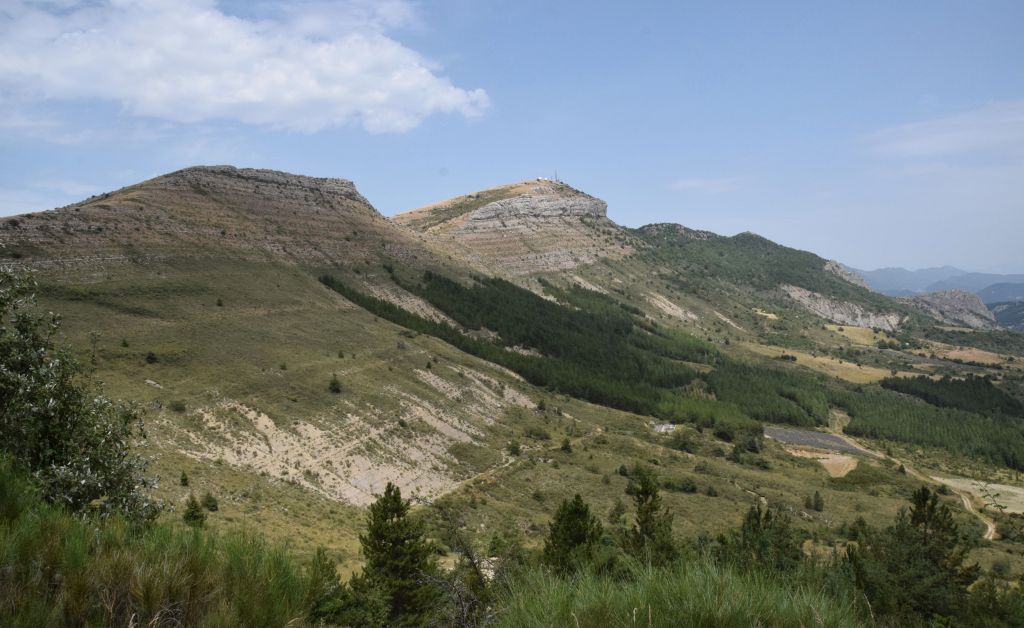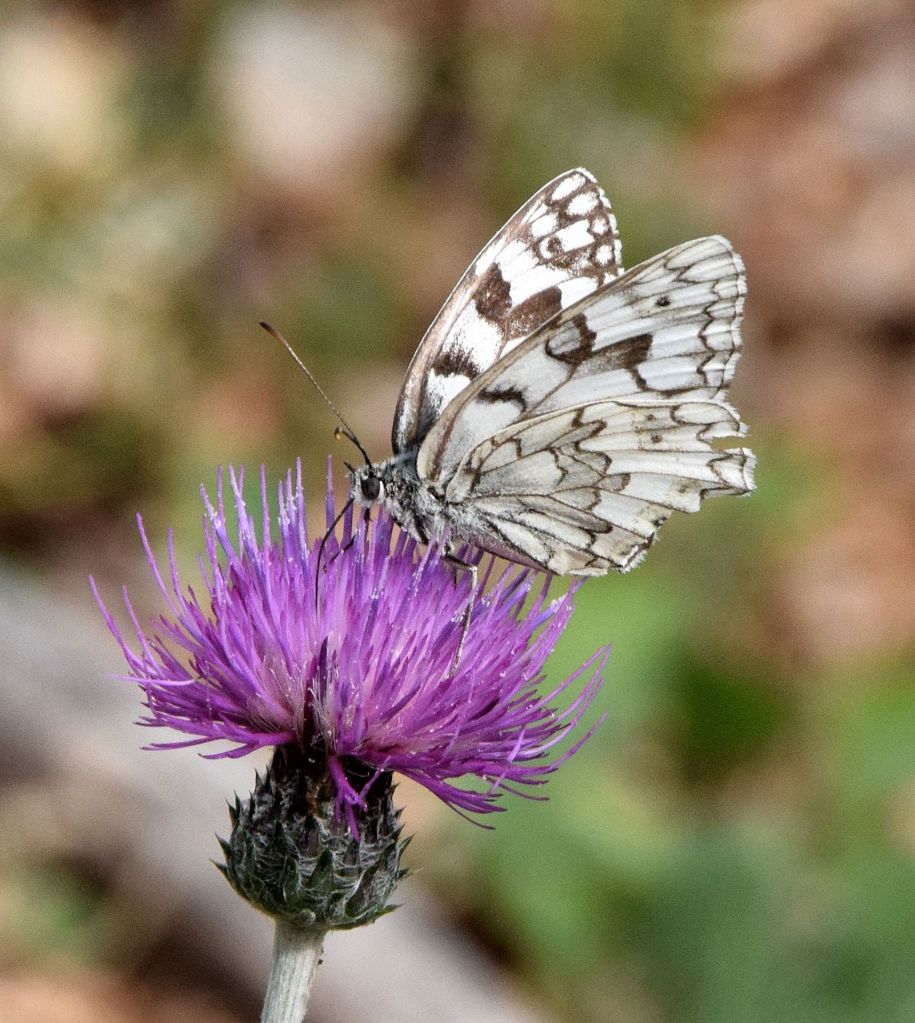It had bugged me ever since 2019 that I couldn’t find my way up to this peak (1364 m) back then, and doing so now was a further prime motivation for repeating this tripette. I had devoted some effort to looking for the regional scarcity Esper’s Marbled White at different sites through those five previous days in Provence and understood Bergiès to be a prime location, as well as another good one for observing Apollo.
What were the chances of losing my way again? Well I did, and that was partially due to having been under a wrong assumption as to which mountain Bergiès is. Google Maps going into ever decreasing circles mode after I took another wrong turning on Tuesday (18th) didn’t help. So the upshot was the loss of over two hours prime morning butterfly time. Nonetheless, the outcome over two days rather compensated for all that.
The summit of Mt Bergiès (with observatory) viewed from the ascent.
On eventually finding at past midday the sought, metalled access road, signed Chemin de Bergiès from the end of Col de l’Homme Mort, I at once began to see butterflies and drove up stopping at promising looking places. Along the higher part of this ascent (pictured above) the roadside was lined with wild flowers, especially Lavender which attracted a typical array of frequent regional species such as Graylings, Marbled Whites and Swallowtails. But in amongst them were rather more Apollo than I had encountered on Montagne de Lure, and these would settle to nectar for long enough to offer this collage.


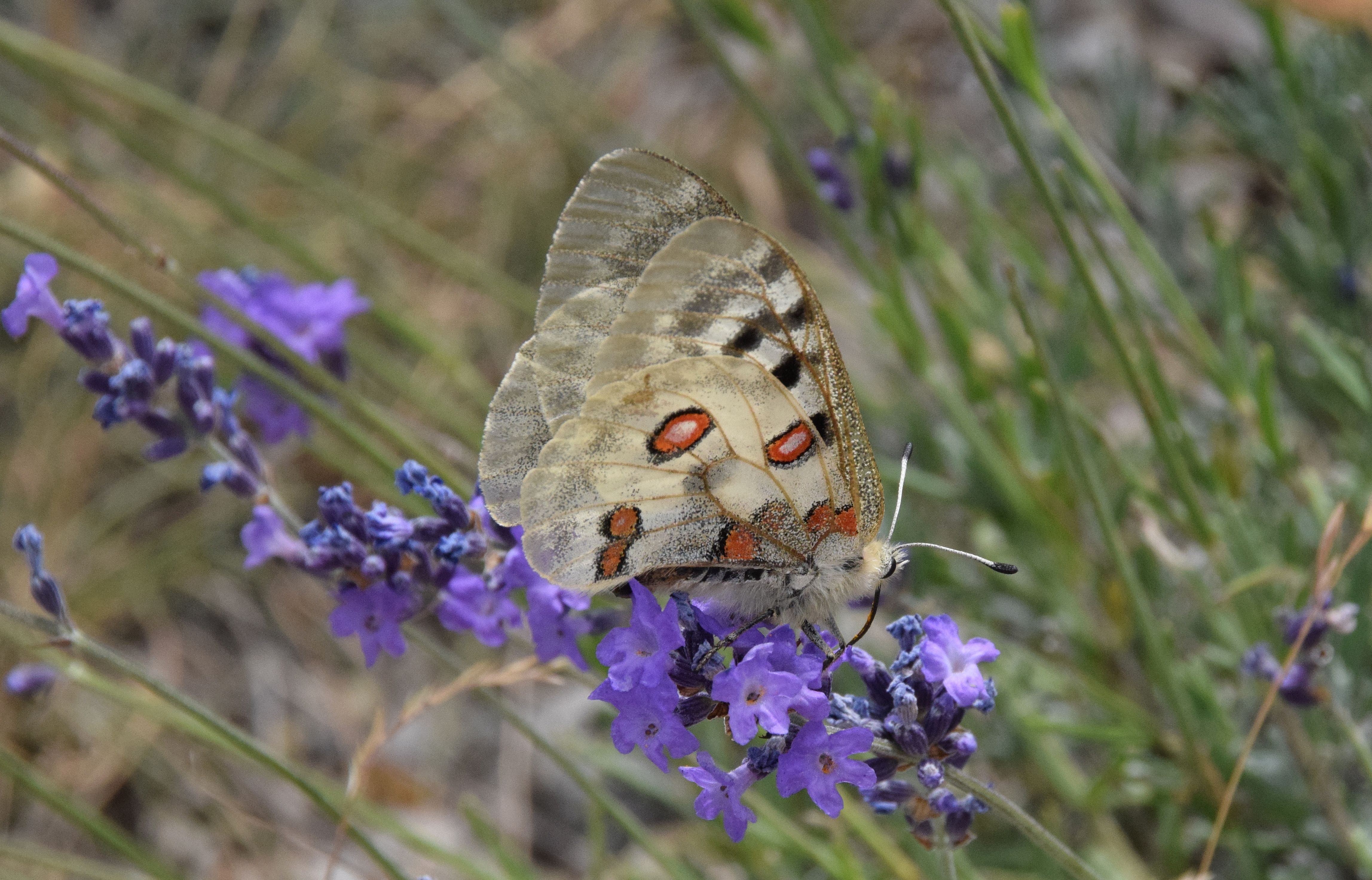

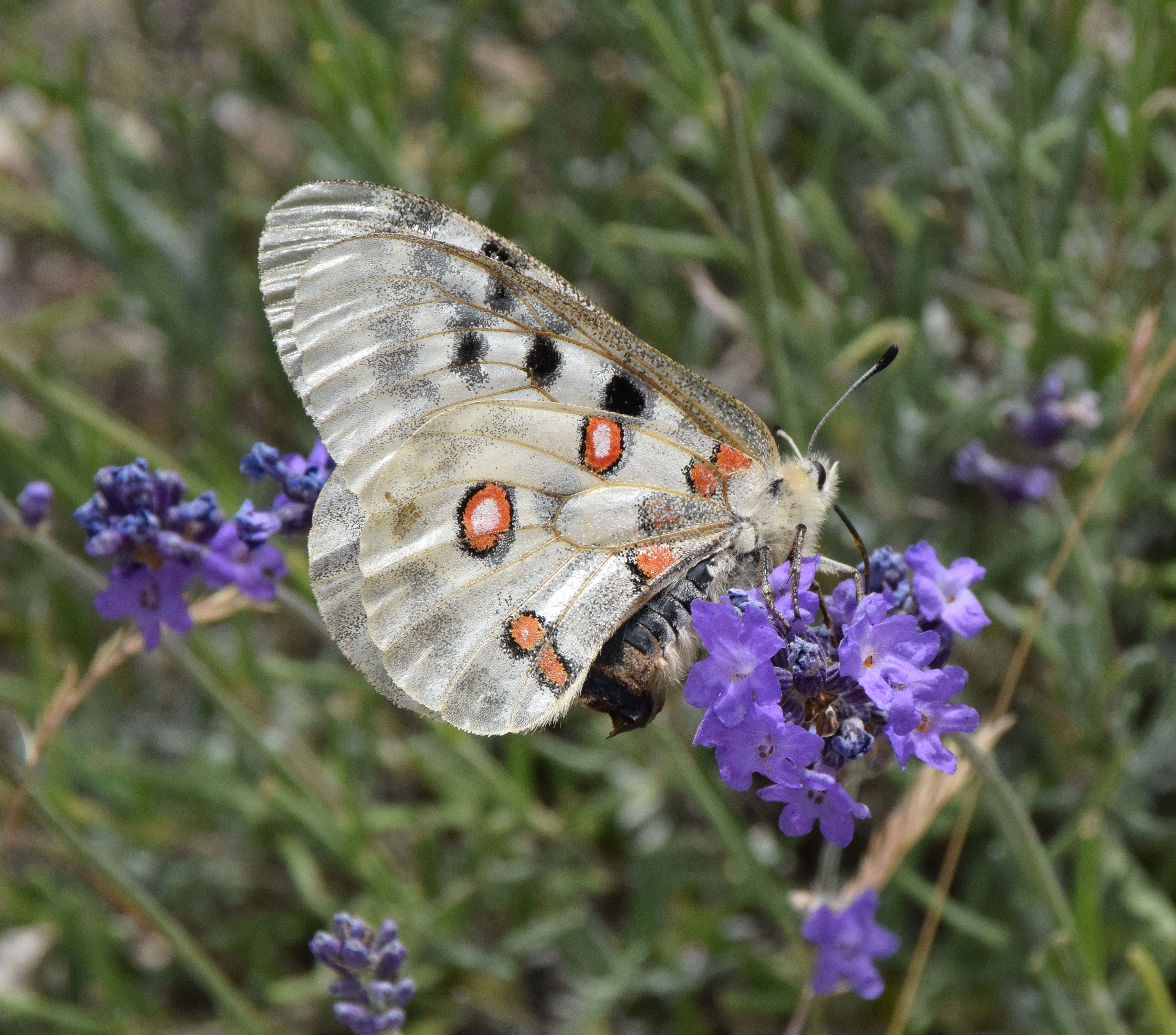
Beautiful, fresh, translucent-winged Apollo in all their magnificence
If converting Apollo had been uplifting at that first location, this was just superb. Time and again the giant, floppy white forms would settle on the Lavender, holding on fast in quite strong wind and largely unconcerned by my attentions. After visiting the summit, which is crowned by an astronomical observatory, I repeated the exercise again. As throughout this tripette I paid little attention to those butterflies I had done full justice to herein back in 2019. But I made an exception for my third self-found connect with a Hermit (pictured below, right), a less frequent Grayling for which I seem to have a special knack of crossing paths with in remote places.
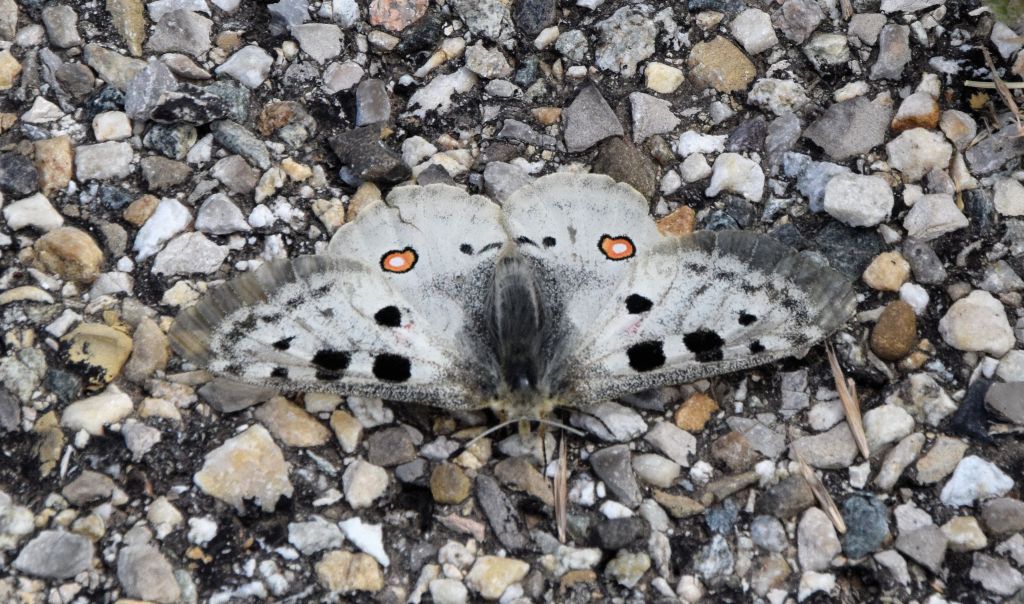
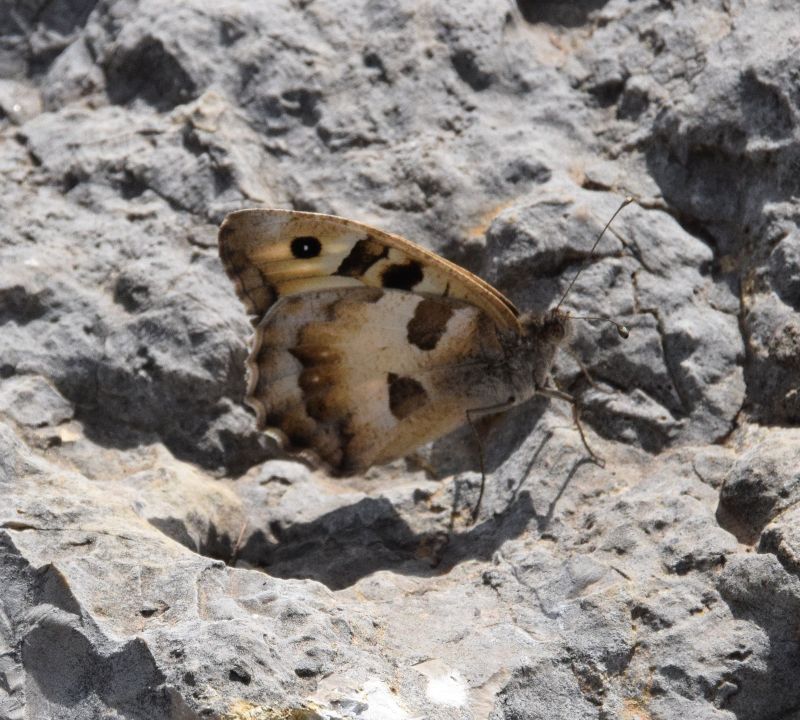
On Wednesday (19th), as in the previous post I came back in the morning with bearings gained to commune with butterflies as they warm up with the day. Now my attention turned to the top trip target, Esper’s Marbled White (Melanargia larissa) that I opted to search for lower down. The French sub-species r cleanthe occurs only in the northern Alpes-de-Haute-Provence and some neighbouring localities such as this post’s. Esper’s core region is in northern Spain, and there are outlier populations of another race in Italy and the Balkans. All three varieties are single brooded in June and July. The clearest diagnostics (as illustrated below from Collins) are an extra medial black cell bar in the middle of the forewing, and grey, sausage shaped markings on the unh wings. Having failed to find them in 2019 I was determined to succeed now.
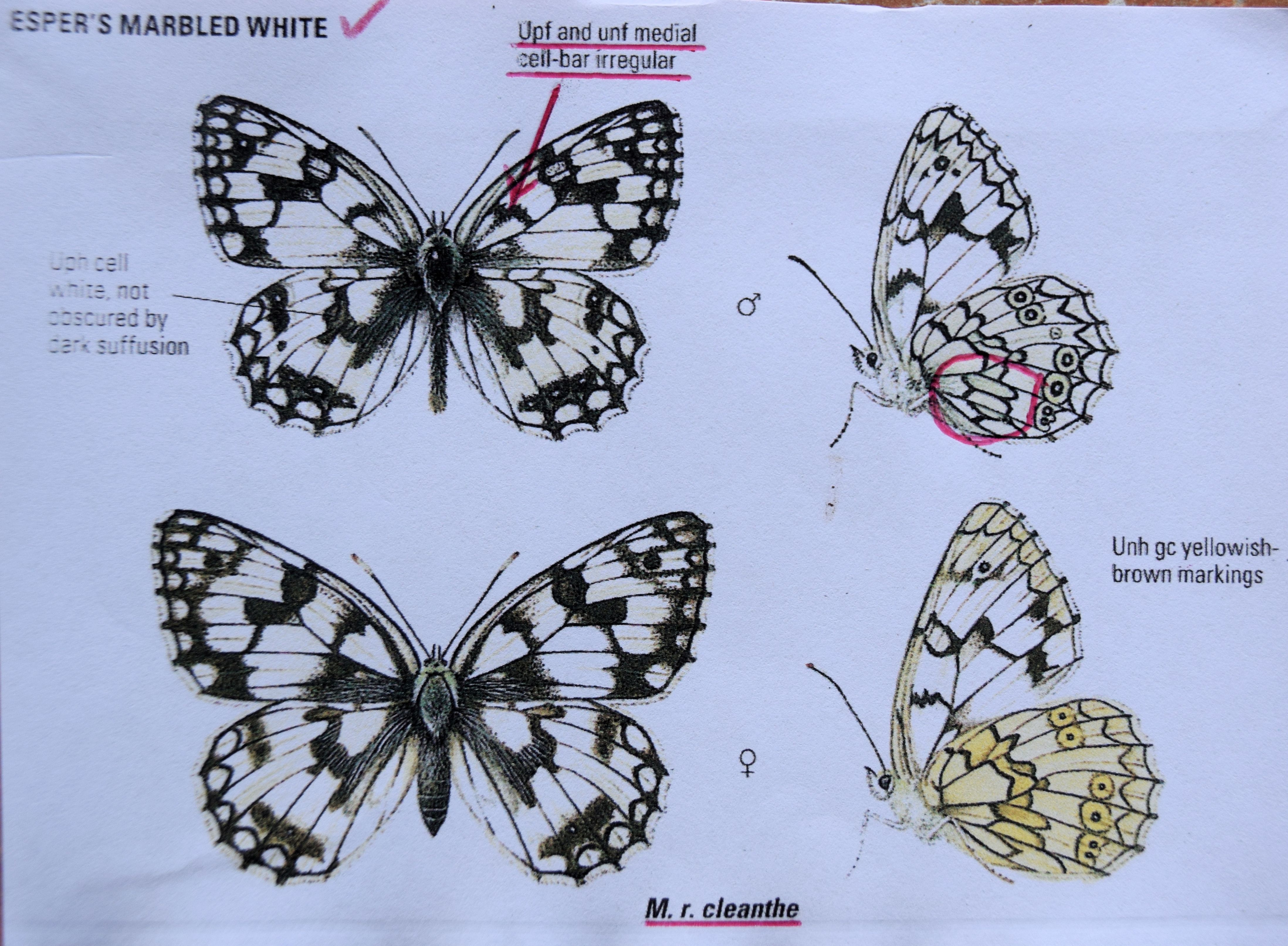
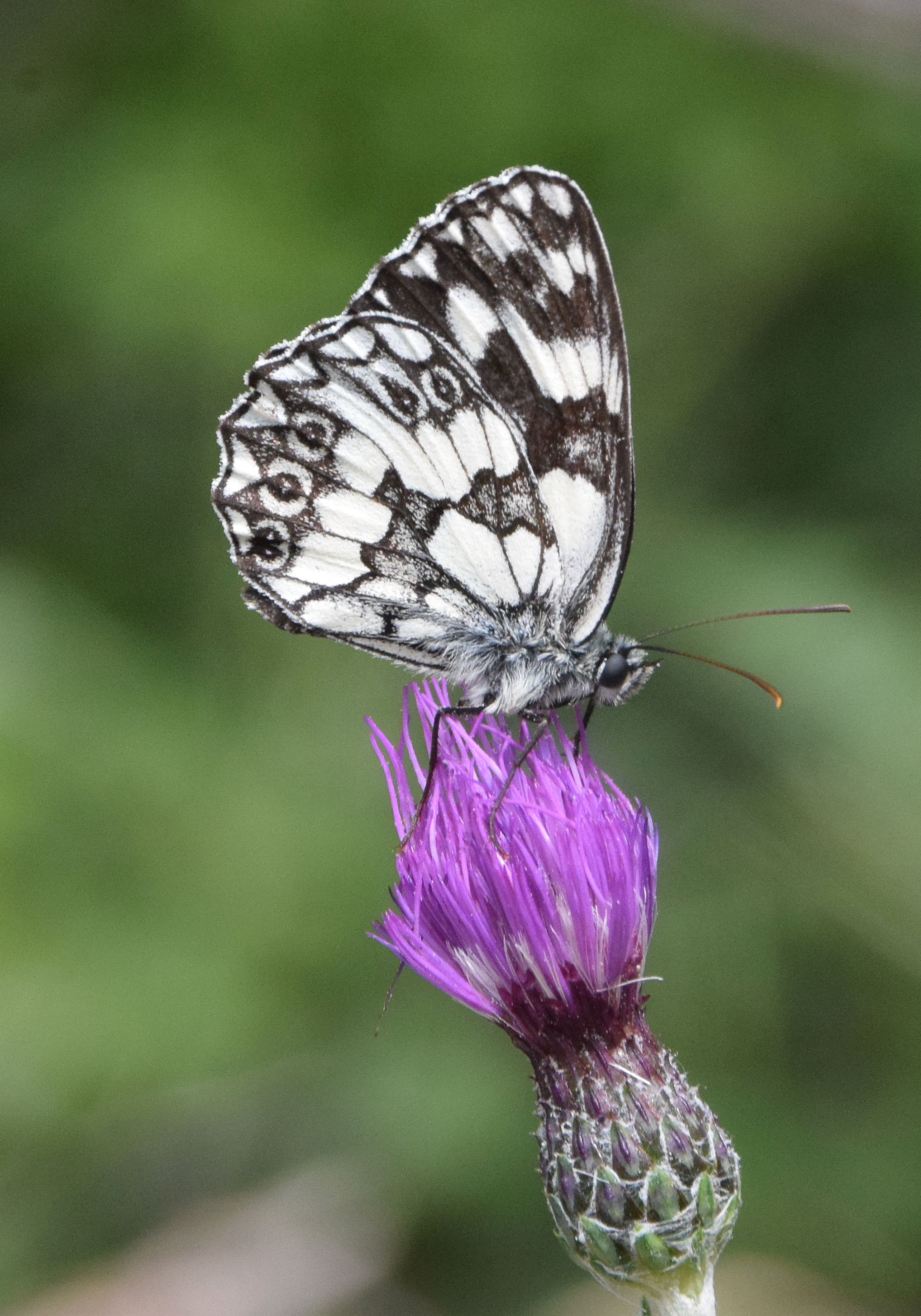
Esper’s Marbled White © Richard Lewington and M galathea (right) for comparison
The best strategy suggested itself as taking pictures of any Marbled White perched with wings closed, then matching those to outsourced images I had brought along for the purpose. Most turned out to be regular or dark-form M galathea and f procida, but on approaching the individual pictured below it just seemed different in a brighter and whiter way, as well as being quite confiding. Already with a gut feel that mission had been accomplished I was fortunate enough to obtain a positive ID from the illustrator himself later in the day, and that was job done. I am very pleased to have captured an image that highlights both of the cited top and under-side diagnostics in one composition. The clean, clearly defined, black and white appearance of this slightly larger item than galathea is also readily apparent. The specimen looks browner in the edited image than it did in the field.
I encountered nothing else that was new or different on this repeat day on Bergiès, and no more Apollo in a presentable condition. The day before I was quite gloriously the only person on the mountain, but now there was hang gliding at the summit and a certain amount of traffic up and down. The next sequence presents the most interesting species and pictures from these two days both here and at nearby sites.
The Gatekeeper (bottom left) is of a regional form decolorata, but not the separate species Southern or Spanish both of which I have recorded in Provence previously. On Wednesday afternoon I checked out Gorges d’Aulan for Odo, hoping as in la Brenne for Orange or Yellow-Spotted Emeralds and Western Spectre, but finding only Small Pincertail (again!) and Southern Skimmer. But along the stream bed there were several Cinquefoil Skipper, of which I gained my first ever underside study (bottom, right)

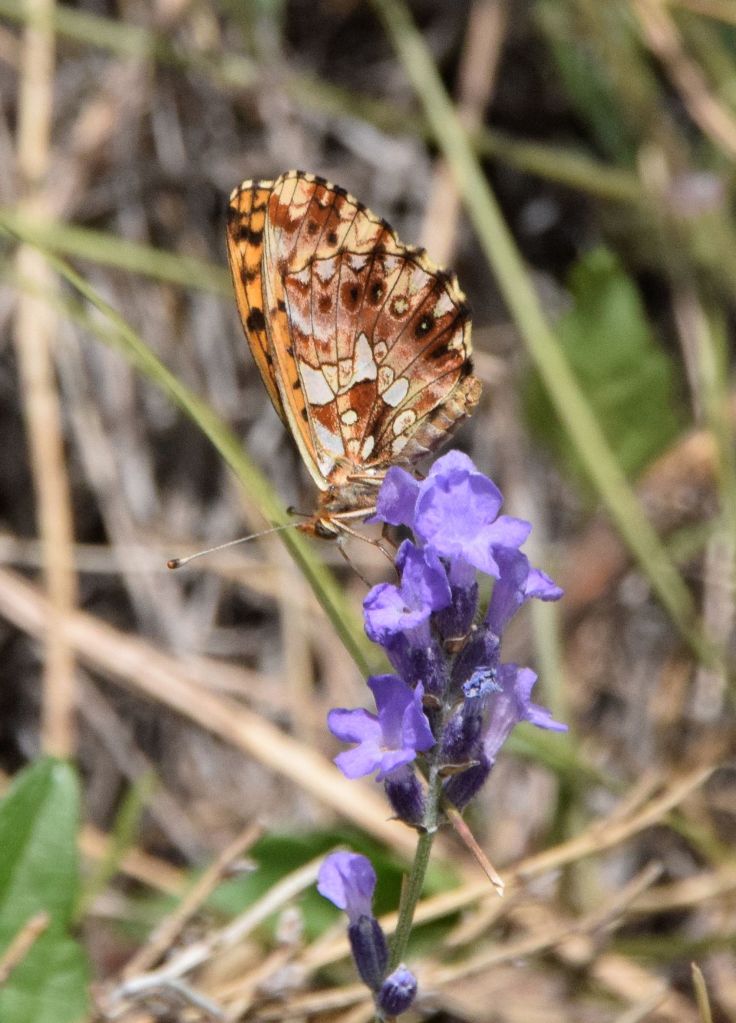
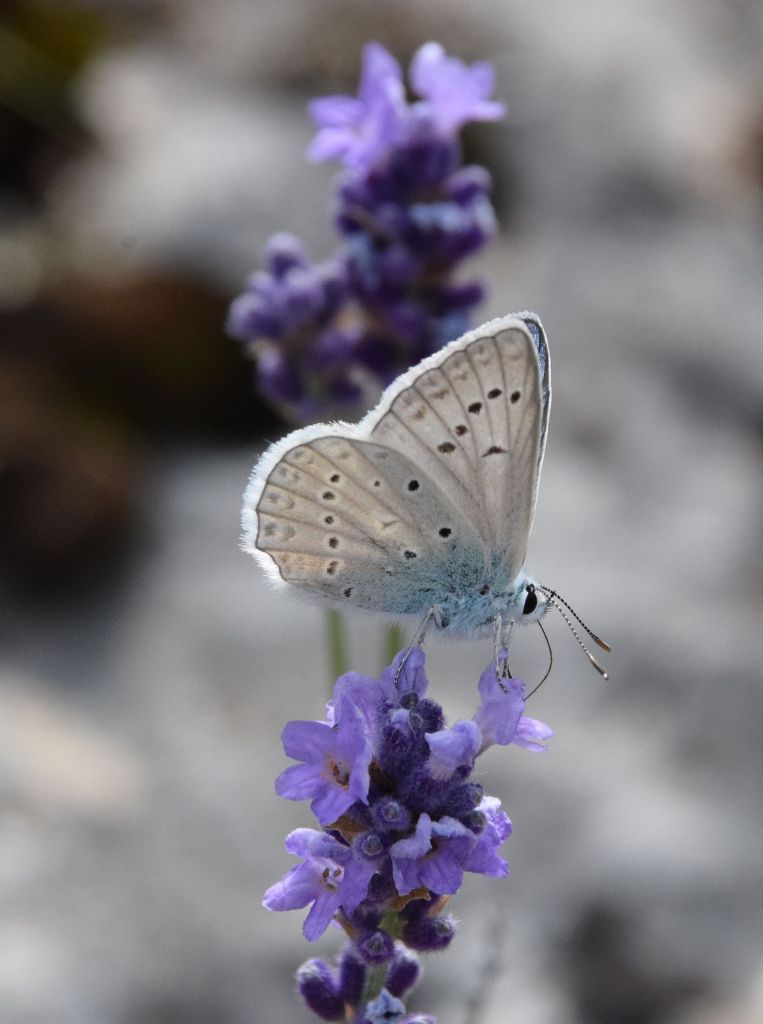

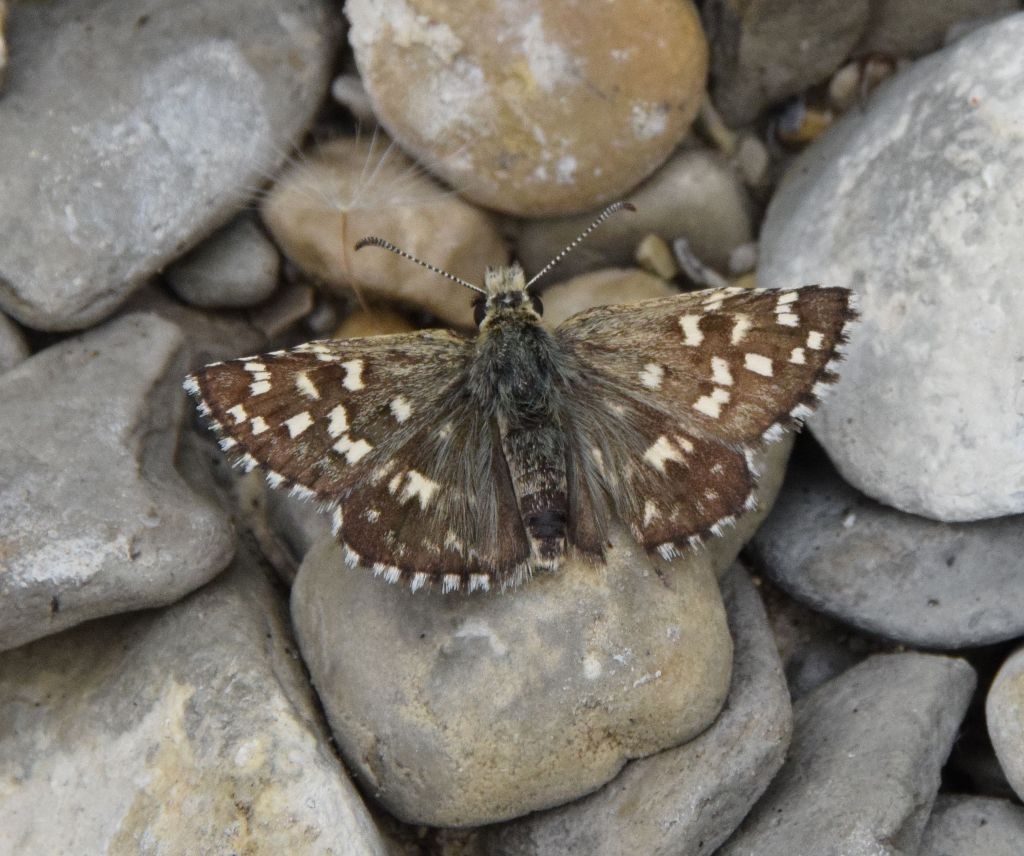

Car hire costs in the south of France in July and August are horrendous, around twice what I normally would expect and that is for the smallest class of vehicle. Petrol prices have not fallen from spring 2022 levels as in Great Britain, and though I self-catered at the same farmhouse B&B as in 2019, supermarket food prices also seemed high. So this was by some way the most expensive of the five tripettes I have undertaken this year, and I would think twice about doing another one in high summer.
With the completion of this agenda for 2023 I have now done all the wildlife travel I had planned prior to the interruption of those Covid years, and this was the most fulfilling exercise of the five. What next … who knows?

